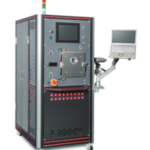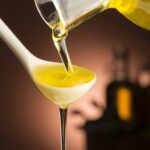In our previous episode, we introduced seven classifications in “Application of SPS Sintering”.
This time, we will provide more specific information on “Comparison and Improvement between SPS and Conventional Sintering technologies”.
Comparison and improvement between SPS and conventional sintering methods
The following are examples of how SPS has produced sintered compacts with superior strength, hardness, etc. compared to conventional sintering methods, due to the effects of rapid temperature increase, ON/OFF pulse energization, etc., which are unique features of SPS.
As an example of comparison between SPS and conventional hot press sintering (※),
Fig. 1 shows the effect of sintering temperature respectively.
This is a comparison of spark plasma sintering and hot pressing on densification of silicon carbide ceramics under an applied pressure of 30 MPa and a holding time of 5 minutes.
In the case of hot pressing, the relative density of sintered compact at temperatures below 1800 °C is less than 90% although it obtains more than 98% at 2000 °C. On the other hand, SPS yields relative densities of about 70% and 90% at 1700 °C and 1750 °C, respectively.
When SPS sinters at 1800°C, about 200°C lower than hot press, a full densified sintered compact with a relative density of 98% is obtained. Thus, SPS is found to be more effective than the hot press in densifying silicon carbide ceramics. This is thought to be due to the effective effects of self-heating caused by minute electrical discharges between particles, activation of the particle surfaces, and high-speed mass transfer.
Silicon carbide ceramic sintered by SPS and hot-pressing are investigated by X-ray diffraction; similar materials to the starting materials β – SiC, Al203, and Y203 were detected in the sample obtained by hot-pressing at 1700°C.
β – SiC, Al2O3, yttrium aluminum garnet (YAG; Y3Al5O12) and β – SiC, yttrium aluminum alumite (YA; Y3Al5OI2) are also observed at 1800-1900 and 2000 °C, respectively.
In SPS, β – SiC, Al2O3, and Y2O3 are observed at 1600-1700 °C. β – SiC, YAG, and YA are observed at 1750-1850 °C. The YA phase appears as a transition from the YAG phase at around 1970 °C.
The above results suggest that in SPS, the internal temperature of the sintered compact may actually be higher than the measured temperature.
Fig. 2 Bending strength of specimens at room temperature(※)
In the case of hot press sintering, bending strength increases with sintering temperature, but even at a high sintering temperature of 2000°C, strength of only about 630 MPa is obtained.
On the other hand, in SPS, strength increases with increasing sintering temperature as in hot press sintering, but strength increases rapidly at 1700°C or higher. At a sintering temperature of 1800°C, an average strength of 850 MPa is obtained, exceeding 730 MPa, which is the strength of sintered compacts obtained by hot-press at 2000°C for 30 minutes.
The density of the sintered compact is almost the same for SPS sintering at 1800°C as for sintered compacts obtained by hot pressing at 2000°C. However, the bending strength is significantly different, as shown in Figure 2, with SPS showing strength far exceeding that of hot pressing.
(※)Reference Effect of Spark Plasma Sintering on Densification and Mechanical Properties of Silicon Carbide / Nobuyuki TAMARI, Takahiro TANAKA, Isao KONDOU, J of Ceramics Soc. Japan, 103 740 – 742 (1995)
In the next episode, we will present a comparison of the Vickers hardness of silicon carbide ceramic samples obtained by hot pressing and SPS.





